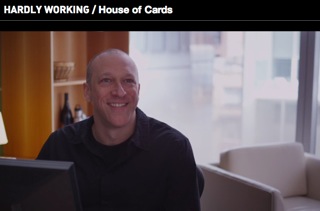I met John Courtney at the MediaPost Social Media Insider Summit this past August. As the person with the longest title I know, “Certified Agile Project Manager & Marketing Professional” at Sears Holdings E-commerce Content Strategy, I couldn’t help but wonder what the heck he did. Turns out, he’s a busy guy especially in the area of content marketing and more specifically product videos. Sears now has over 33,000 user generated product reviews on its website which are helping to drive online sales. That’s a lot of videos by any measure.
If a brand tried to create all of these videos themselves, the cost would inevitably be in the millions. To help facilitate the creation and moderation of these user generated videos, Sears partners with ExpoTV. And while John was cagey about the future not wanting to reveal confidential information, reading between the lines it seems like Sears will be upping its investment in these videos perhaps even matching the millions of products it sells online. Regardless of the exact number, I found our whole conversatin quite enlightening and suspect you will too.
Drew: You mentioned that you have over 33,000 user generated product video reviews up on Sears.com. That is a ton of videos. What is the strategy behind creating all these videos and how long did it take to figure out it was working for Sears.com?
Yes, currently there are over 33,000 consumer-generated product reviews directly matched to approximately 12,500 relevant items on product pages. It’s been said that one in every four consumers posts something about you and your product or to you. This segment is growing rapidly and brands call this growing sector the “Brand Connected Consumer.” These people choose to be actively engaged in the conversation about product sharing and as they keep going, consumer-generated video numbers will increase geometrically.
The strategy behind creating all of these videos is really to test whether or not there is any lift benefit for key product page performance indicators such as revenue per visitor and average order value. This content also naturally lends itself to YouTube to drive more traffic back to product pages. It’s still probably a little too early to tell but so far product pages with consumer-generated product review videos appear to outperform those without.
Drew: Do these videos cost a lot of money to produce? If not, why not? (Feel free to talk about the vendor that helps you get these videos)
There’s definitely an investment to get consumer-generated media like this, but it’s completely different than producing professional video and other types of crowdsourced content. There is a really large investment in developing the community, getting brand connected consumers excited about this new form of supporting other consumers and communicating with brands, making the process easy for them and then just all of the infrastructure to support product matching and content distribution. That being said, once consumer-generated media is scaled it becomes much more cost efficient. You can get hundreds of consumer-generated videos for around same cost of a handful of professionally-produced videos. Both media types have unique benefit however and can be synergistic when combined. Professionally-produced video conveys perceived benefits while consumer-generated validates those product claims giving the consumer more information to make a confident purchasing decision. The sales effectiveness should offset costs to produce videos. Fortunately, Expo’s service also takes a lot of the investment burden off starting from scratch.
Drew: Have you been able to see a direct lift in sales (or at least site traffic to Sears.com) as a result of video views?
So far, the program indicates lift in conversion, engagement, intent and loyalty across numerous tests over the past year. At this point in program, the content is having the impact naturally expected by combining the power of video and the authenticity of real users.
Drew: What role do videos play in your overall marketing mix? Or asked differently, what role do they play in the customer journey?
Consumers are empowered. By sharing their thoughts and opinions through video, they have gone beyond joining the conversation. They’ve created it. In the past, merchants told the public what they would be buying. Then again, in the past revolutions weren’t forged on Twitter. Now they are. Think about being in the middle of a flash mob of any sort? It’s a pretty powerful phenomenon, just as an illustration. Yes. The public, as in the consumer, has created the conversation and brands all need to listen because they have the power and they’re not giving it back, and the more you listen and heed the comments to strengthen your brand, the more valuable the conversation will become.
Drew: Are you increasing your investment in videos? If so, why? (If possible please provide how many videos you plan to produce in the next 12 months as part of this answer relative to how many products you list online)
Investment in video is definitely increasing. Consumers are getting used to having video and it is obvious it drives behavior. At the same time, the barriers to creating the content are falling and more creators are getting involved. Any major retailer has millions of SKUs but the bulk of revenue is highly concentrated. Videos tend to be concentrated on those key products so the impact is much greater than it would look by a raw coverage stat. Long story short, the program is moving from trial stage and into the scaling phase.
Drew: What metrics do you use to evaluate the effectiveness of your videos and how to you rank them in terms of importance? Asked differently, is there typically a direct correlation between quantity of views and say click thrus to your website? Or are there a few videos with only a modest number of views but that have very high conversion rates?
The metrics most focused on are revenue per visitor and average order value for product pages with consumer-generated videos. Other CTAs are evaluated but these are probably the two most important.
Drew: With so many user generated videos, are you concerned about the production values of these videos? Does the customer care?
This is definitely something that has come up. As volume of videos has grown this has become less of a concern. Watchers of the consumer-generated videos can rank videos so as more videos match a product the higher quality videos naturally become front and center with the poorer quality being pushed down. It’s important to mention that all consumer-generated videos are screened by an ExpoTV editorial team to screen out content that is either lascivious or demonstrates improper use of a product that could cause potential harm. Outside of ensuring these types of videos are removed it’s important all other consumer-generated product review videos, whether good or bad reviews, be available so it’s authentic to the consumer.
Drew: With videos, is it as simple as making and posting them to generate viewership? Or do you need to “market the marketing” either via media (paid, earned and/or owned) to generate significant viewership? And if so, can you talk about how you “market” your videos?
Posting videos on product pages generates its own interest and drives sales even when people don’t watch the videos given the visual impact from the still image.
Drew: What recommendations do you have for other marketers when approaching a content marketing program like the one you have in place?
It’s important that marketers have clear objectives and expectations entering a program like this. As discussed above, if the idea is to get professional production quality videos done cheaply they are going to be disappointed. You can’t force reviews to happen for a specific product. Some videos will be negative. Some videos will have poor production quality or feature a creator who probably won’t be featured on America’s Next Model anytime soon. The benefit is in the conversion lift, the authenticity of the content and the breadth of coverage afforded by consumer-generated content.




